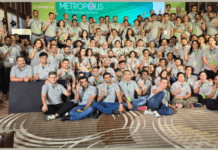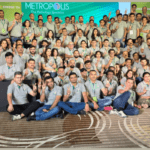Some of the world’s largest organisations have resorted to layoffs in lieu of an economic downturn this year. Companies such as Amazon, Meta and Twitter have laid off more than 52,000 employees since May 2022. In all practical sense, these organisations have not handpicked each and every employee to lay off. Rather, they have resorted to using vast performance metrics and AI systems to distinguish the high performers from the underperformers. In India, Infosys and Wipro carried out performance tests for campus recruits to thin out the intake.
If performance metrics and AI systems can detect underperformers, organisations must surely have similar systems that can predict potential quitters. The question is, ‘Are AI-driven systems better at catching potential quitters than human beings?’
“Without leaders that value real human connections, there will be no merit in taking advantage of these tech systems,”
Chandrasekhar Mukherjee, sr. president and CHRO, Bhilosa Group
Before predicting the next quitter, organisations need to have a better understanding of their workforce. Retrospective tools such as exit interviews and annual employee surveys don’t provide an organisation with real-time data on their employees. An experiment by professors Brooks Holtom, Georgetown University and David Allen, Texas Christian University utilised publicly-available organisational and personal data to create a system that proactively measures an employee’s likelihood to quit.
Organisational data from websites such as Glassdoor, analyst ratings, stock-price valuations and new articles were paired with publicly available personal information such as an employee’s past jobs, employment anniversary and tenure, skills, education, gender and geography to form a ‘turnover propensity index (TPI)’ for each employee.
5,00,000 employees working across various organisations in the US were classified as ‘unlikely’, ‘less likely’, ‘more likely’, or ‘most likely’ to quit with the help of machine-learning systems that were trained on the turnover factors. These classifications were turned into scores and then made into an index (TPI) that was then tested on the basis of the following – those identified to be ‘most likely’ to quit were 63 per cent more likely to change their jobs than those classified as ‘unlikely’; and those identified as ‘more likely’ were found to be 40 per cent more likely to quit.
Drawbacks
AI or ML-driven systems utilised in organisations come with more than a few limitations. When using a system such as this — that is dependent on publicly-available data — the HR department still has to go through numerous privacy agreements with the employees to ensure that they don’t feel infringed upon. Any sense of insecurity that comes from such a data- collection drive can affect the results of this particular system.
“Even if the company chooses to use publicly-available data for an AI system such as this, they have to be extremely careful not to make the employees feel like they are snooping. All the information used in such a project has to be consented to, in order to ensure complete data transparency with the employees,” adds Chandrasekhar Mukherjee, sr. president and CHRO, Bhilosa Group.
Data for the same can be collected through internal surveys and tests that can form an index such as TPI, and yet be reliant on human intervention. Although such a system provides a lot of clarity to the organisation, it cannot be used as a foolproof way to predict potential quitters. While it can provide the HR department with the appropriate data points to initiate an intervention, it cannot give complete assurance of that person’s intentions. To do so, the organisation must have an HR department that is truly connected to the employees. One that has its finger on the pulse of the workforce; not one that just appears to be a mouthpiece for the organisation.
“Culture cannot be fed into a system as data, culture in ultrasound, intangible, and can only be identified by humans,”
Kartik Rao, group CHRO, The Good Glamm Group
Yes, the organisation can leverage technology such as the Organisational Network Analysis (ONA) systems to keep tabs on the workforce, but the human connection is essential. Why? The organisation will never be able to understand the actual needs of the workforce without having its ear on the ground. Having leaders that have a tangible influence on the workforce without seeming unapproachable is a necessity. They become a point of reference for those who may have reservations regarding the organisation and intend to leave.
These leaders will be able to identify the potential quitters way faster than the AI-based system. This is because, they will spot the tell-tale signs in their daily activities and will not have to wait for a survey to confirm the same.
Kartik Rao, group CHRO, The Good Glamm Group, enundiates, “Having leaders that have a lasting impact on the employees is incredibly important. If the HR department wants to instil a culture of open communication in the workforce, the leaders have to drive that. Culture cannot be fed into a system as data, culture in ultrasound, intangible, and can only be identified by humans.”
HR should focus on identifying and moulding such leaders within the organisation as they will be the ones to provide faster, better-informed predictions on this matter. Unfortunately for many, remote-working arrangements make it much more difficult to create such relationships between employee and HR. In such a case it is the responsibility of the HR leader to reach out to them via the numerous mediums we have today to check on them to ensure they are alright.
“HR needs to focus on creating leaders that understand and appreciate human connections. Without leaders that value real human connections, there will be no merit in taking advantage of these tech systems,” says Mukherjee.
In the end, technology can only act as an aid. The focus should be on creating leaders that have real relationships with the workforce to be able to identify those who may quit in the near future.
“I’m a firm believer in the fact that technology and HR is a relationship of ‘and’, not ‘or’. Technology does a great deal in aiding the HR function but cannot take over certain essential roles,” concludes Rao.
Value our content... contribute towards our growth. Even a small contribution a month would be of great help for us.
Since eight years, we have been serving the industry through daily news and stories. Our content is free for all and we plan to keep it that way.
Support HRKatha. Pay Here (All it takes is a minute)







































Yes, I fully agree with Mr and Mr.Mukherjee, HR has to have a connect with the employees to understand their pulse. Also the human connect should be more informal so that employees speak their heart.
Technology does play an important role for HR but it may not understand human heart.